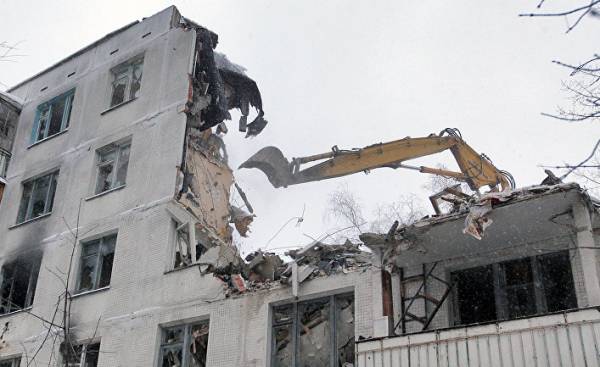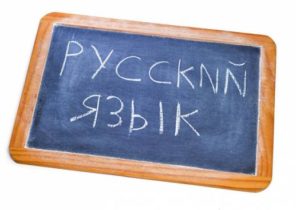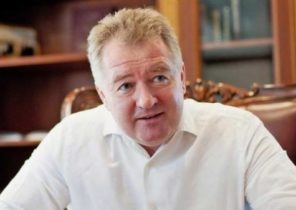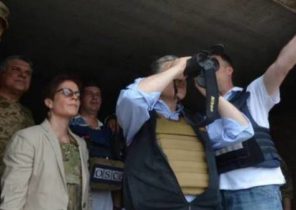
Among the jokes about the five-story building from the era of Khrushchev, the most obvious: “Why fishermen don’t like to talk in the corridors of the Khrushchev about fishing? Because their catch is they will not be able to show on the hands.”
In German this joke seems awkward. But if you happen to be in a house built in 50-60-ies, and the Russian is not funny. Even if the fisherman and can show the size of his catch, the hands will run into the wall or ceiling.
The maximum area of 65 square meters is a four — room apartment, which in those days was the most popular. The isolated room was never. It was incredibly hot in the summer, cold in winter.
Building plans — incredible goal
If you follow the views of the Russian authorities, soon all this will end. The master of the Kremlin Vladimir Putin said in late February at a meeting with Moscow mayor Sergei Sobyanin that the demolition of these houses better than their overhaul. This corresponds to expectations of inhabitants of Moscow, said the head of state.
The demolition of Khrushchev is a massive project. We are talking about 25 million square meters of housing, said Sobyanin, the former head of the presidential administration, is configured very loyal to Putin. For these purposes, the city plans to allocate 300 billion rubles (4.8 billion euros).
Relevant ministries were instructed to draft a new law for the relocation of residents from houses slated for demolition. Currently these houses is home to 1.6 million people.
In General, they live in concrete boxes. Even during the construction duration of their “life” was limited to 25-30 years. These five houses were built for a certain period, to build communism, says the mayor of Khrushchev’s words. He probably assumed that communism will come through 25, a maximum of 30 years.
The first houses were numbered
Meanwhile, some of them more than 60 years. Their condition is outdated, said Sobyanin. They cannot be repaired, “a sad spectacle”. At the same time Khrushchev was formerly a simple but progressive way to tackle housing problems. After Stalin’s death in 1953, they were designed to replace the barracks and communal apartments, to every Soviet family, at the latest, to the 80-th years and had his own apartment.
Stylistically it was dominated by functionalism, which was supposed to replace Soviet classicism. The pace of construction was incredible. The first houses were even supplied with serial numbers. At one time a long five-story building covered up to 80 percent of the area of Soviet cities.
While in quality they are far behind the spacious apartments with high ceilings in the Stalin era. And concrete houses were constructed under Leonid Brezhnev in the 70s, too, was more comfortable.
Sobyanin is not the first who believes that Khrushchev has outlived its usefulness. His predecessor, Yuri Luzhkov at the end of 90-ies has launched a program to demolish five-story building. Since that time, Moscow had been demolished houses with a total area of about six million square meters. In their place was built a house with an area of 21 million square meters. According to the original plan, the project had to be finished by 2010, but actually due to changes in legislation, it lasts to the present day.
That is today’s Putin’s intention to demolish about 8 thousand houses with total area of 25 million square meters is only the continuation of old initiatives. Of the 234 million square meters of residential space in the capital around half is in need of capital repairs. But such repair in the case of Khrushchev just does not make sense.
In March 2018 presidential elections are held
The fact that Putin was puzzled by his initiative, his vassal Sobyanin right now due to upcoming elections. In March 2018 the election of President, followed in the autumn elections of the mayor of Moscow, which is home to a tenth of the Russian population. As noted by Kirill Yankov, Institute of economic forecasting in the newspaper “Vedomosti”, the economic component for the city in this case has less value than social.
Still active Sobyanin — the provision of pedestrian areas and parks were directed primarily at the middle layer, however, has not led to the desired effect in the election. Now, apparently, he’s targeting the poorer strata.
Many of them still live in the Khrushchev. The average cost per square meter is 140 thousand rubles (2200 euros), which is 20 percent below the average cost per square meter in Moscow. The political scientist Dmitry Orlov believes that this action will bring an additional 15 percent he and about seven percent of Putin in the elections. Win and there is a big free area for construction, which can then be sold at a higher price. Moscow saves your budget because the city can then give less to the national budget.
And fishermen, who are mostly in the lower strata of the population, will get perhaps a wider corridors, which will be able to demonstrate their catch.







